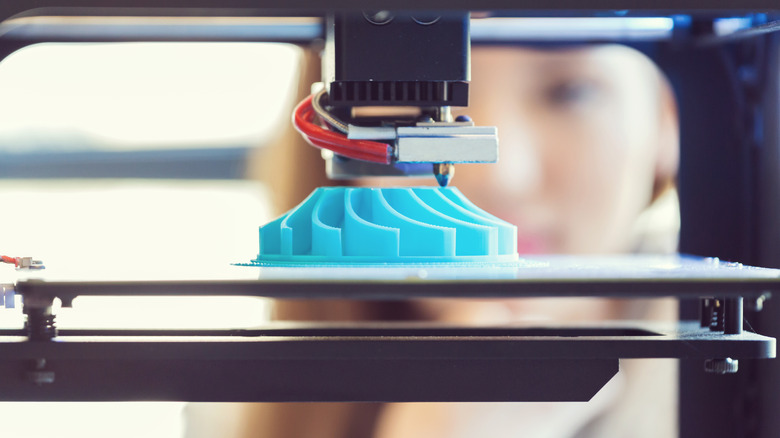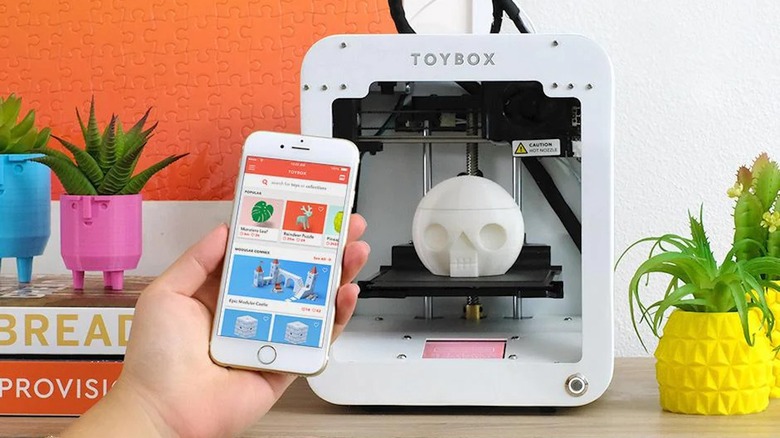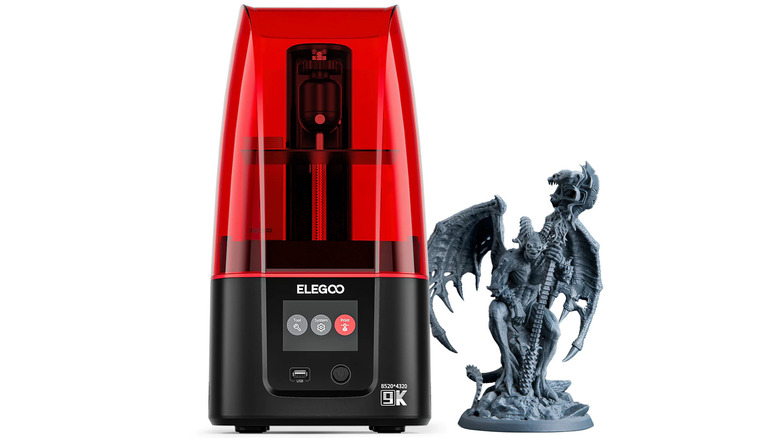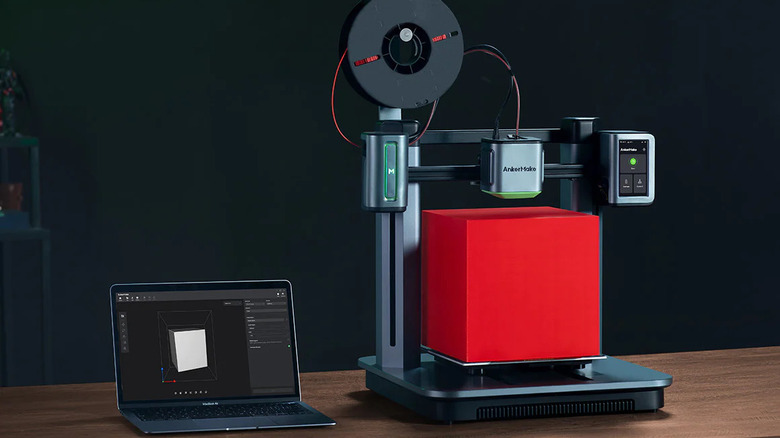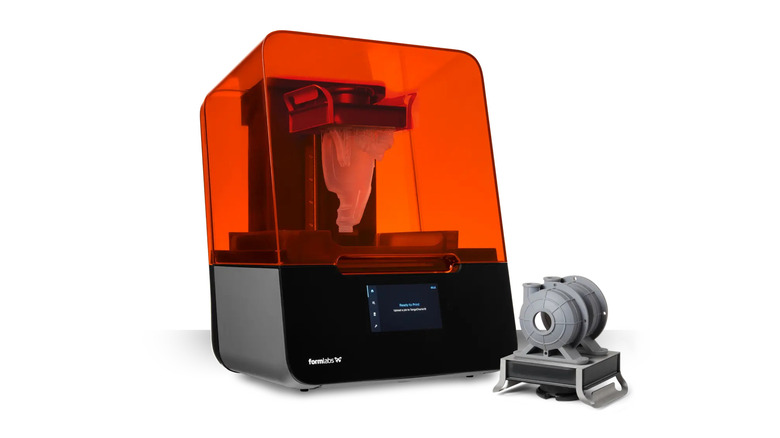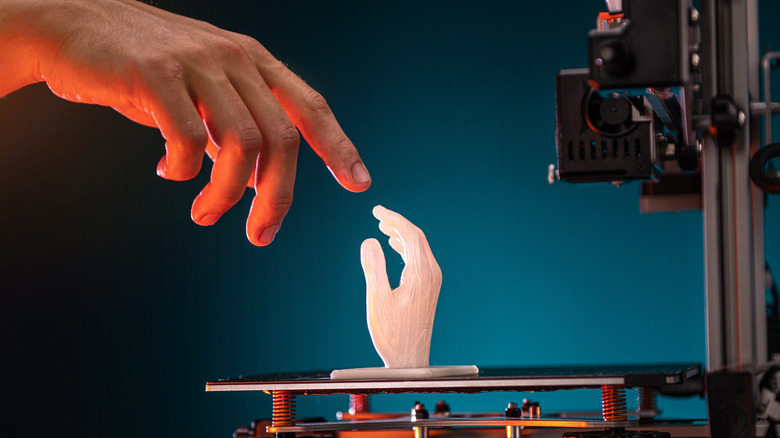How To Choose The Best 3D Printer For You In 2024
We may receive a commission on purchases made from links.
With 3D printers becoming both more advanced and more consumer-friendly (sometimes both at the same time), it can be difficult to resist the allure of picking up the hobby for yourself or upgrading your current setup. The thing is, there are a whole lot of models and brands to sort through — as well as other important factors to consider — before you make any kind of financial commitment.
The first step in picking a 3D printer is to figure out what you want to get out of it. Do you want something to experiment with before moving on to more advanced printing? Are you hoping to make functional pieces like tools or more artistic things like miniatures? How much post-print prep work (i.e., surface smoothing, curing, etc.) are you willing to do? Where will you keep it when it is or isn't in use, and will you be able to accommodate the necessary space (and possibly ventilation) needs? How much money are you willing to spend on it?
You may not be able to answer all of these questions before you start looking, but it is recommended that you have as many of them sorted out as you can before buying anything. That is why the list below includes a broad variety of 3D printers intended for newcomers, small budgets, those who want their prints done quickly, precise high-quality output, or larger-than-average print projects. The choices featured are the result of SlashGear's first-hand reviews and experience, as well as the experience of other professional reviewers.
Beginner friendly 3D printers
If you're new to the 3D printer space and you're not entirely sure how you'll end up using one, there's no shame in using something simple — like, made-for-kids simple.
The Toybox 3D printer boasts a very simple setup and compact design, can be used with the associated app to quickly find and print various items, and the normally $440 deluxe bundle includes eight different filament colors (which is a safer-to-use non-toxic plastic made from corn) to get you started. It can also accept your own custom print files, meaning you can play around with the basics until you get a feel for the process and then start making your own stuff or importing other designs.
Being intended as an introductory printer for kids does have its drawbacks, however. The Toybox isn't particularly big, sporting an approximately 2.75 x 3.15 x 3.5-inch printing space, so print sizes will be limited. Print quality isn't as smooth or refined as you'll find with other more advanced printers, either. With that said, finished prints also don't require any additional finishing once they're done, so you can pop them off the "Easy-Peel" bed and start playing with, using, assembling, and so on right away.
3D printers for budget buyers
When you have to pay close attention to cost but don't want to compromise your 3D prints too heavily, consider the Elegoo Mars or Elagoo Neptune series. The company is fairly well known in 3D printing circles for having quality printers, with the added bonus of offering a number of models in the $100 to $200 range.
On top of the number of options and price points, Elegoo also sells several of its printers' parts separately. That way if one specific element of your printer breaks or wears down you can usually order just the part you need rather than replacing the entire machine. If you decide to upgrade to a larger or more advanced printer down the line, there are enough variations available that you won't necessarily have to switch brands and learn a new series of particular quirks and settings from a different manufacturer.
You can find both FDM (Fused Deposition Modeling) and resin printer models, depending on the type of printing you want. You might also want to think about paying a bit extra for washing and curing accessories in order to both strengthen your prints and sharpen those details.
3D printers with speedy output
One thing 3D prints tend to have in common, regardless of the materials used, is that they can take a while to finish. Of course, this can vary based on the size and complexity of the model, but in general, the process is often time-consuming. This is why some 3D printers are designed to work at higher speeds — with some compromises.
Anker's AnkerMake M5 3D Printer has become a fairly popular option, sporting a majority of positive user reviews on various retail websites. It can allegedly complete prints significantly faster than many of its contemporaries, and a built-in AI camera claims to be able to keep tabs on your in-progress prints and pause production if something goes wrong in order to prevent wasting materials on a bad print.
That said, it does carry a somewhat hefty $699 price tag and the touted AI camera has been described by many users (as well as The Verge) as ineffective at best. The advertised 250 mm per second fast printing also has a tendency to affect print quality, resulting in a rougher surface, and the amount of sound it makes — even when not in use — has been a sticking point for some.
3D printers with high print quality
Fine details, sharp lines, steady contours, and the like all benefit from a higher print quality, and there are a lot of choices out there if you're not on too tight of a budget. Elegoo is once again a solid choice if you step outside of the $200 price point and into the $300 to $500 (all the way up to $1,299) price range — though even those less expensive printers are highly regarded.
However, Bambu Lab is currently one of the most highly recommended 3D printer manufacturers across the board. Its $699 P1P model gives you vibration and extrusion compensation for smoother printing lines, and it can be upgraded to handle higher-temperature materials — though Tom's Hardware notes that the P1P does have some problems when using ABS filaments (among other compromises). Alternatively, for $1,449 you can get the X1-Carbon Comb that SlashGear reviewed in 2023, giving it an eight out of 10 rating. That model supports automatic material handling and bed leveling, can print using multiple colors and materials in one project, and claims high-quality prints along with a 166% speed setting that can churn out a two-hour print in around 15 minutes.
If you're willing to go above (well above) $1,500, though, there's always the Form 3+ — SlashGear favorably reviewed the Form 3 in 2022, giving it a nine out of 10 rating — by Formlabs. Reliability, performance, and quality seem to go hand-in-hand with Formlabs' printers, but all of that comes at a literal cost with the professional-grade hardware touting a $2,499 starting price on the Formlabs website and around $150 or more per resin cartridge.
3D printers for big projects
Large format 3D printers are certainly a thing and can be found if you'd like to print individual parts and pieces that would otherwise be too substantial for a more typically proportioned model. The catch is that they also tend to carry a proportionally large price, and will require a significant amount of physical space compared to their more hobbyist-oriented counterparts.
Elegoo does have its own large-scale offerings (for less than four digits, too) at the higher end of its Neptune series by way of the $470 Neptune 3 Max, which Tom's Hardware cautions has a very large table footprint (but no other downsides), and $550 Neptune 4 Max, which is a great mix between large-scale and fast printing according to The Gadgeteer. Each with a build volume of 16.5 x 16.5 x 19.7 inches and 16.5 x 16.5 x 18.9 inches, respectively — provided you don't mind FDM printing with filament. Elagoo does have a number of models that use resin, but not at the same larger-than-average scale.
Why we selected these 3D printers
The basic framework of this list was created with the help of SlashGear's own 3D printer manufacturer rankings, which was then separated into the five core categories presented with the intention of providing suggestions for some of the most common user types. Each manufacturer's products were then further investigated on their respective official websites to find potential candidates for the different categories. After this, all possible choices were cross-referenced with SlashGear's own reviews, as well as the reviews of other professionals.
